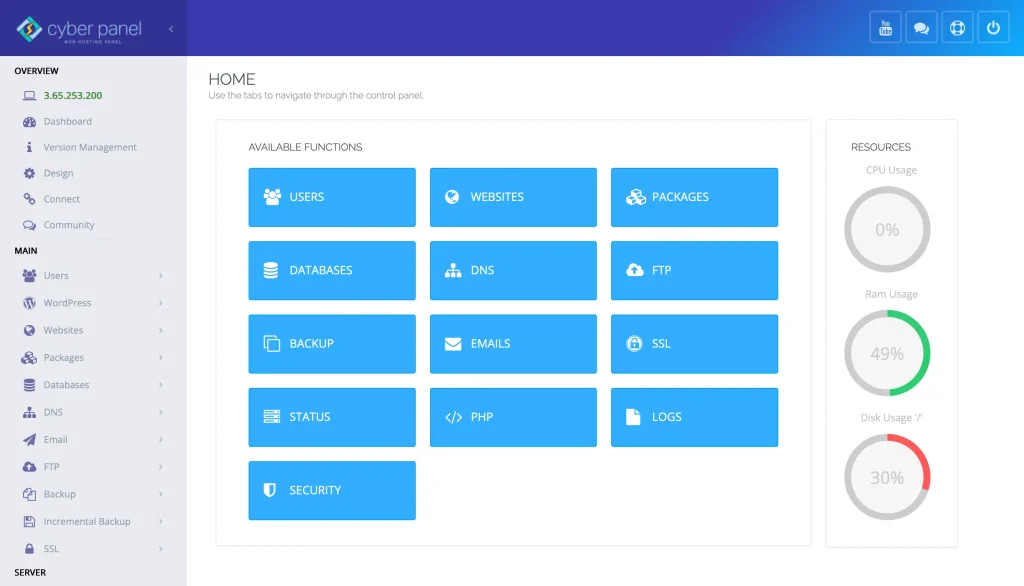Ansible is used to automate infrastructure and automation always brings the need to manage data: DB credential, API key, SSH private key, and more. When playbooks contain sensitive secrets in plaintext, they pose a significant security weakness as they can be exploited.
This motivation is handled well by Ansible Vault, which provides built-in encryption of sensitive data. It enables users to safely keep, view, edit, and administer encrypted secrets directly inside ansible playbooks. Ansible Vault secures sensitive data to be used on automated deployments.
Let’s discover!
What is Ansible Vault?
Ansible vault is a security feature that allows for the encryption of sensitive files and variables that are being used in Ansible playbooks. It allows you to keep passwords, API keys, and other sensitive information secure while still allowing them to be accessible to automation.
Key Features
- AES-256 Encryption – Ensures security for sensitive data.
- See and Change Encrypted Documents – Permits users to view and edit vault files securely.
- Required Access – Allows the use of password files for automated access to secrets
- Key Management for Security – Blocks unauthorized access to sensitive data.
How to Use Ansible Vault for Secure Automation
Creating Encrypted Vault File
To generate another encrypted file, type:
ansible-vault create secrets.ymlAfter entering a password, an editor opens where you can add sensitive data:
Get exclusive access to all things tech-savvy, and be the first to receive
the latest updates directly in your inbox.
database_user: admin database_password: SecurePass123 api_key: 12345-abcde-67890The file is password-protected upon saving and can only be viewed if you provide the password.
Viewing File With an Encrypted Vault
If you just want to view a vault file ansible without decrypting it permanently:
ansible-vault view secrets.ymlThis will ask for a password and write the contents of the file securely.
Editing an Encrypted Vault File
To change an encrypted file without decryption
ansible-vault edit secrets.ymlThis command opens the file in an editor without decrypting.
Ansible Vault Decrypt
To also decrypt a vault file permanently:
ansible-vault decrypt secrets.ymlEncrypting an Existing File
To encrypt an existing plaintext file:
ansible-vault encrypt secrets.ymlUpon executing the command, the file becomes protected by encryption.
Automation with Ansible Vault Password File
Putting the vault password in a file enables non-interactive executions for automated deployments.
Create a password file:

echo "MySecurePassword" > vault_pass.txtNow run an ansible-playbook with vault decryption:
ansible-playbook --vault-password-file=vault_pass.txt playbook.ymlUsing Ansible Vault in Playbooks
Encrypted variables are stored in an encrypted file, which you can include in an Ansible playbook:
# secrets.yml (Encrypted file) db_user: admin db_password: SecurePass123The use of this file inside an Ansible playbook would then be:
- name: Deploy Application hosts: localhost vars_files: - secrets.yml tasks: - name: Print Database User debug: msg: "Database User: {{ db_user }}"Run the playbook with a vault password file:
ansible-playbook --vault-password-file=vault_pass.txt deploy.ymlThus, sensitive data stays encrypted even when it is executed.
Role of CyberPanel in Secure Automation

CyberPanel is a robust web hosting control panel that is powered by strong security. Combining Ansible Vault with CyberPanel locks sensitive information to enhance infrastructure automation efforts.
Some of the advantages CyberPanel gets using Ansible Vault
Lock Down Database Configs — Encrypts MySQL and PostgreSQL credentials in automated configs.
Automated Secret Management – Safeguards API keys and server authentication tokens.
Hardened Deployments – SSH private keys and user credentials are never exposed.
Encrypted CI/CD pipelines – Keeps your automation workflows secure by encrypting configuration files.
Integrating Ansible Vault with CyberPanel enables users to efficiently manage secure and automated server configuration.
FAQs
1. How to use multiple vault passwords?
One can have multiple vault files with different passwords. For that, one can specify passwords for different vaults using Vault ID.
2. Is Ansible Vault secure for production use?
AES-256 encryption makes Ansible Vault secure. However, you have to use strong passwords, restrict access to vault files, and never store passwords in source control.
3. What if my Ansible Vault password is lost?
You cannot restore the Ansible Vault password. You have to store the password securely in a password manager.
Final Thoughts!
To sum up, Ansible Vault comes into the picture as an indispensable mechanism to secure sensitive usernames and passwords in automation. So it encrypts passwords, API keys, and configuration files and maintains security while being automated at the same time.
To restrict access, automating the processes is very critical. Ansible Vault ensures sensitive data stays safeguarded during the course of automated workflows.



